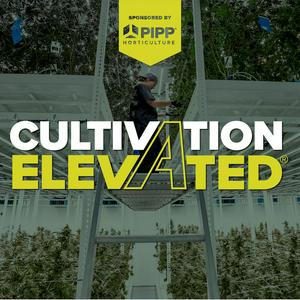040 - The Art & Science of Curing Cannabis: Optimizing Potency, Terpenes, and Consistency
📺 Subscribe & Watch on YouTubeThis episode of Cultivation Elevated dives deep into the curing process of cannabis, exploring its critical role in achieving high-quality flower. Hosts Michael Williamson and Anders Peterson discuss the science behind curing, including moisture content, enzymatic activity, and ethylene gas production. They also examine best practices, common mistakes, and innovative techniques used in both small-scale and commercial settings to optimize terpene retention, potency, and overall product consistency.IntroductionHosted by Michael Williamson and Anders Peterson from Pipp Horticulture.Episode focuses on curing cannabis, part of a three-part series on harvesting, drying, and curing.Discussion blends traditional methods, scientific advancements, and industry best practices.Understanding Curing & Its ImportanceDrying vs. Curing: Drying is a rapid moisture reduction, while curing homogenizes moisture content.Curing enhances the terpene profile, reducing the “grassy” chlorophyll aroma over time.Enzymatic activity and degradation of compounds like chlorophyll play a key role in quality.Environmental factors like temperature, humidity, and light exposure impact the curing process.Different Curing ApproachesSome commercial growers treat the entire drying room as a curing space.Traditional methods include curing in bags, jars, totes, or turkey bags.Burping (controlled opening of storage containers) is used to release excess moisture.New technology is emerging, such as auto-burp systems and sensor-based monitoring.Science & Variables in the Curing ProcessEthylene gas plays a role in the ripening process (similar to bananas and tomatoes).Vapor Pressure Deficit (VPD) impacts moisture release during curing.Cannabinoid changes: Overexposure to oxygen converts THC to CBN, making cannabis more sedative.Environmental consistency is critical – differences in humidity, temperature, and air circulation affect the final product.Challenges & Best Practices in CuringDifferent strains (cultivars) require different curing approaches.Sorting buds by size and density helps create consistent drying and curing conditions.Packaging matters – nitrogen purging was used in the past, but it sometimes reduced flavor quality.Commercial growers need to maintain uniform environments in trim rooms to avoid unintended drying during processing.Modified Atmospheric Packaging (MAP), commonly used in the food industry, could play a role in long-term cannabis storage.Industry Insights & Future ResearchMany growers still rely on experience ("feel") rather than scientific testing.More research is needed on ethylene gas’s role in curing and optimal curing environments.Tobacco and food drying industries offer some insights, but cannabis curing is...

